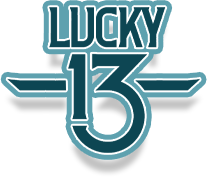From Local to Long-Distance: Later Gator Moving LLC Has You Covered
When it comes to moving, the process can often feel overwhelming. Whether you’re relocating across town or planning a long-distance move, having a reliable moving company by your side makes all the difference. This is where Later Gator Moving LLC comes in. Known for its exceptional service and customer care, Later Gator Moving LLC has quickly become a top choice for individuals and families looking to make their transition as smooth as possible.
Established with the mission of taking the stress out of moving, Later Gator Moving LLC offers a full range of services tailored to meet every client’s needs. From packing and loading to transportation and unpacking, their team of experienced professionals ensures that each step of the process is handled with care. This attention to detail has earned Later Gator Moving LLC a reputation for excellence in the moving industry.
One of the things that set Later Gator Moving LLC apart from other moving companies is their commitment to customer satisfaction. They understand that every move is unique, and they take the time to create a customized moving plan that suits your specific requirements. By choosing Later Gator Moving LLC, you’re not just hiring movers—you’re partnering with a team that genuinely cares about making your move successful and stress-free.
Clients who have used Later Gator Moving LLC consistently praise the company for its professionalism, punctuality, and efficiency. Whether it’s a small apartment move or a large household relocation, Later Gator Moving LLC approaches every job with the same level of dedication. Their team is trained to handle even the most delicate items, ensuring that your belongings arrive at your new home in perfect condition.
Beyond just moving services, Later Gator Moving LLC also offers packing supplies and storage solutions. This means that if you need extra time before settling into your new space, you can safely store your belongings without worry. Their secure storage options and quality packing materials provide additional peace of mind during what is often a hectic time.
Another advantage of working with Later Gator Moving LLC is their transparent pricing. Moving expenses can quickly add up, but this company offers clear, upfront quotes without hidden fees. They believe in honesty and integrity, which is why so many clients trust them for both residential and commercial moves. No matter the size or distance, Later Gator Moving LLC provides affordable options without compromising on quality.
Their services are available to a wide area, making them a convenient choice for people moving within the state or across the country. The company’s modern fleet of moving trucks is equipped to handle moves of all sizes, and their drivers are experienced in navigating both urban streets and rural routes. This ensures timely delivery of your belongings, no matter where you’re headed.
Sustainability is another value that Later Gator Moving LLC embraces. They strive to reduce waste by using reusable packing materials and adopting eco-friendly practices whenever possible. By choosing them, environmentally conscious customers can feel good about minimizing their move’s impact on the planet.
The moving team at Later Gator Moving LLC is fully licensed and insured, providing customers with an added layer of protection. They go through rigorous training to stay updated on the best moving techniques and safety protocols. This dedication to professionalism means you can trust them with even your most valuable possessions.
For those planning an office move, Later Gator Moving LLC offers specialized commercial moving services. They understand the importance of minimizing downtime and ensuring that your business is back up and running as quickly as possible. Their efficient planning and execution make them an ideal partner for businesses of all sizes.
In addition to their core services, Later Gator Moving LLC is known for offering helpful moving tips and resources. Their website features guides on packing, moving checklists, and advice for a smooth relocation experience. This commitment to educating clients is just another way they go above and beyond in customer service.
If you’re considering a move, it’s clear that Later Gator Moving LLC should be at the top of your list. Their combination of professional service, affordable pricing, and customer-focused solutions makes them a standout in the moving industry. Whether you’re moving your home or business, you can count on Later Gator Moving LLC to make the process as seamless as possible.
With countless satisfied clients and a growing reputation, Later Gator Moving LLC continues to set the standard for what a moving company should be. By choosing their team, you can look forward to a move that is efficient, stress-free, and even enjoyable. Don’t let the challenges of moving weigh you down—let Later Gator Moving LLC handle the heavy lifting while you focus on settling into your new space.
